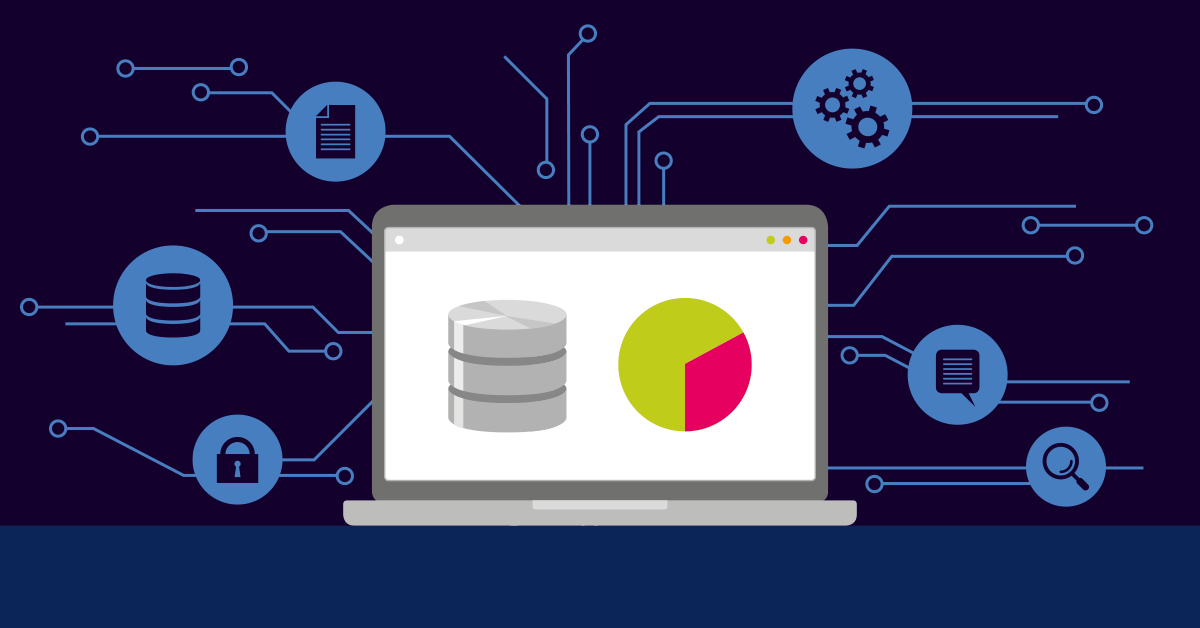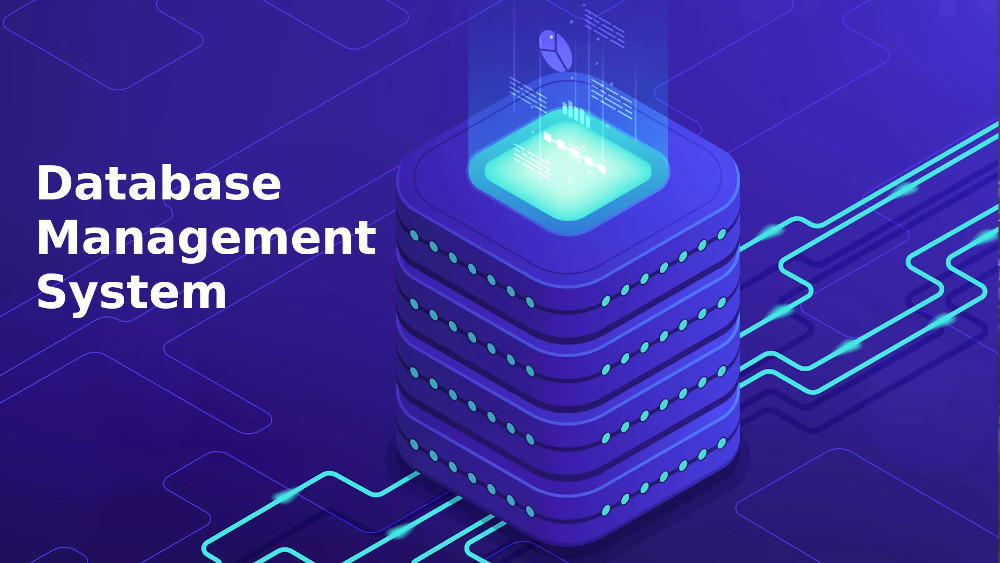Database Management System (DBMS): Definition
As the volume of your data increases, so does the need for a database management system (DBMS), which is a computerized system that helps orchestrate large quantities of information. A DBMS can improve your data processes and increase the business value of your organization’s data assets, freeing users across the organization from repetitive and time-consuming data processing tasks.
Introduction to Databases
Before understanding what a Database Management System (DBMS) is, let us first understand what a database is.
In layperson’s terms, the database is a big container where data is stored in a structured format. We cannot store semi-structured or unstructured data in a database.
A database is an organized collection of data that can be modified, retrieved, or updated. Data, DBMS, and applications associated with them together form the database concept. The data, stored in the database, is in the row and column format, which is called a table. Every website, that needs us to sign up, uses a database. There is no internet without databases.
For instance, a college will have to keep the information about its students, including roll number, name, age, blood group, etc. The college will also need to keep the details of the professors and infrastructure. The details, that the college has, can be stored in a database named College, or if it is just the student details, then it can be named Students. All such details should be in a structured format, such as tables, in a hierarchy.

What is a Database Management System (DBMS)?
Database Management Systems (DBMS) are software systems used to store, retrieve, and run queries on data. A DBMS serves as an interface between an end-user and a database, allowing users to create, read, update, and delete data in the database.
DBMS manages the data, the database engine, and the database schema, allowing for data to be manipulated or extracted by users and other programs. This helps provide data security, data integrity, concurrency, and uniform data administration procedures.
DBMS optimizes the organization of data by following a database schema design technique called normalization, which splits a large table into smaller tables when any of its attributes have redundancy in values. DBMS offers many benefits over traditional file systems, including flexibility and a more complex backup system.
Components of DBMS
There are five major components of DBMS:
- Hardware – Hardware includes the actual physical computer system that is used to access the database. Mainframes to microcomputers are utilized in DBMS. Oftentimes large storage devices are used to store a huge amount of data.
- Software – The DBMS is the software here. It helps connect the physical database to the end users. Whenever a user wants to access the database, access has to be granted by the software.
- Procedures – All the instructions that are given to access the DBMS, fall under Procedures. From installing DBMS to generating reports, all of these instructions are a part of the procedures involved in DBMS.
- Data – Data is the information that is managed by DBMS. DBMS helps in managing data and easing access to useful information. Metadata, the information stored in DBMS for better comprehension of the data, is also stored in DBMS itself.
- Database Access Language – The language that is used to write commands on the DBMS to access, utilize, manage, update, and delete data, is called the Database Access Language. Commands are written using the Database Access Language and submitted to the DBMS so they can be executed by the DBMS.

How does DBMS work?
Put simply, a database manager and their team are responsible for ensuring the health and performance of a business’s databases. Using best practices like the ones outlined above ensures organizational databases run as they should. However, operating with a database management system (DBMS) provides much-needed control and visibility.
In a nutshell, a database management system works as follows: It organizes your database files and provides end users more access and control over their data. To accomplish this, A DBMS allows users to manipulate the data in their database files, including creating, editing, and updating it when needed. From there, a DBMS can store and retrieve said data from the database.
A DBMS provides 5 main functions:
- Granting multiple users concurrent access to a single database.
- Establishing and maintaining security rules and user access rights.
- Backing up data regularly and recovering it quickly should a breach occur.
- Setting up database rules and standards to protect data integrity.
- Providing “dictionary” definitions and descriptions of available data.
Of course, a DBMS does not replace a database manager or a database administrator. These specialists ensure the database structure runs as it should, and they can create user permissions to control who has access to the data. Together, a DBMS and a specialist can ensure quality control over the data.
Types of Database Management System
Following are the different types of DBMS:
- Hierarchical DBMS: This type of database management system showcases a style of predecessor-successor type of relationship. You can consider it to be similar to a tree, where the nodes of the tree represent records and the branches of the tree represent fields.
- Relational DBMS: This type of database management system, has a structure that allows the users to identify and access data about another piece of data in the database. In this type of DBMS, the data is stored in the form of tables.
- Network DBMS: This type of database management system supports many-to-many relations where multiple user records can be linked.
- Object-oriented DBMS: This type of database management system uses small individual software called objects. Here, each object contains a piece of data and instructions for the actions to be done with the data.
Advantages of DBMS
- Controls database redundancy: It can control data redundancy because it stores all the data in one single database file and that recorded data is placed in the database.
- Data sharing: In DBMS, the authorized users of an organization can share the data among multiple users.
- Easily Maintenance: It can be easily maintainable due to the centralized nature of the database system.
- Reduce time: It reduces development time and maintenance needs.
- Backup: It provides backup and recovery subsystems that create an automatic backup of data from hardware and software failures and restores the data if required.
- Multiple user interfaces: It provides different types of user interfaces like graphical user interfaces, application program interfaces
Disadvantage of DBMS
DBMS may offer plenty of advantages, but it has certain flaws-
- The cost of hardware and software of a DBMS is quite high, which increases the budget of your organization.
- Most database management systems are often complex, so training users to use the DBMS is required.
- In some organizations, all data is integrated into a single database that can be damaged because of electric failure or corruption in the storage media.
- Using the same program at a time by multiple users sometimes leads to data loss.
- DBMS can’t perform sophisticated calculations

Why do we use Database Management Systems?
We use database management systems to create centralized, shared, consistent interfaces to programmatically accessed data. Database management systems help provide a logical structure to the data we’re working with, efficient storage, and distributed access. Using a DBMS is faster, more secure, more powerful, and easier than directly managing data yourself.